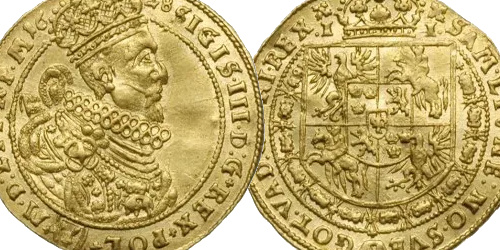Very rare silver Poniatowski medal minted in 1770.
In the catalogue of the collections of the Royal Castle in Warsaw - Museum, Volume 2, it is written about this medal as follows: "King Stanisław August is credited with the idea of this medal, most likely issued as a reward for supporters for support during the political difficulties that the Republic of Poland found itself in during the Bar Confederation. This is clearly illustrated by the reverse showing the nave of the state on a stormy sea, sailing between rocks (supposedly between Scylla and Charybdis). The depiction is in the all'antica convention: the ship is stylised as an ancient galley, six sailors sitting with their backs (sic!) to the helmsman have antique equipment and shields with various coats of arms of the lands of the Republic - according to Albertrandi ([bd] b, no. XXIX) these are the voivodeships: Poznań, Kalisz, Podolia and Ruthenia. It may be either a literal representation of one of Aeneas' adventures (as M. Stahr 2008 believes based on the lemma on the reverse; Stahr 2008, p. 172), as well as political propaganda – a response to the actions of Empress Catherine II. It is also possible to interpret the six brave companions of the helmsman – that is, King Stanisław August himself – as : August and Michał Czartoryski, Andrzej Zamoyski, Stanisław Lubomirski, Antoni Przezdziecki and Jan Borch (Zienkowska 1998, p. 216). Ne cede malis – the motto on the reverse of the medal – is a quote from the Aeneid (Vergilius, VI, 132/95), which in a broader translation by T. Karyłowski (Vergilius, Aeneida, Wrocław 1980, p. 158) reads: "Do not yield to evil, but go boldly against it, / Wherever your fate has allowed you!"
The medal bears no date, but it was undoubtedly made in 1770. "Thornische Wöchentliche Nachrichten und Anzeigen" under the date of May 17 of that year reported that "in these days a medal was minted with the inscription NE CEDE MALIS, which as a curiosity in token of special grace is granted". The obverse of the medal is the official image of the king used on Stanisław August's medals, starting from 1766, from the stylus of Jan Filip Holzhaeusser. The medal is known in gold, silver and bronze (bronze are usually newly minted); from the image on the reverse of the ship's name. The preserved, although cracked, reverse die was taken to St. Petersburg in 1868, and returned to Poland after the Peace of Riga, in 1924".
Obverse: head of the king, tied with a royal binder, right, under the neck the minter's initials IPH
STANISLAUS AUGUSTUS DG REX POLONIAE MD LITUA (Stanislaw August, by the grace of God, King of Poland, Grand Duke of Lithuania)
Reverse: ship in a stormy sea, sailing between two rocks, six sailors at the oars and a helmsman steering it, the sailors dressed in ancient costumes with helmets on their heads, various coats of arms at the oars
NE CEDE MALIS (Do not let adversity defeat you)
Silver, diameter 40 mm, weight 26.32 g









